News
The 5 Greatest Horror Performances Not Nominated for Oscars
Why do performances in horror films receive less recognition, at Oscar time, than performances in films from other genres?
Is it because the horror director is often viewed, by audiences and critics, as the real star of these films, while the performances of the actors are often considered entirely irrelevant, secondary, to the film’s success. The Blair Witch Project and the original version of The Texas Chainsaw Massacre provide the most severe examples of this.
What is the best performance in a horror film from, say, the past twenty years? Angela Bettis in May? Chloe Grace Moretz in Let Me In? Was there any possibility of either of these great performances being recognized by the Academy? No. They didn’t have a snowball’s chance in hell.

There have, of course, been exceptions. Piper Laurie and Sissy Spacek were both nominated for their great performances in 1976’s Carrie. Kathy Bates won the Best Actress Oscar for 1990’s Misery. Anthony Hopkins and Jodie Foster both won Oscars for their performances in 1991’s The Silence of the Lambs.

Here are five great horror performances that weren’t even nominated for Oscars and deserved to be. They also deserved to win.
The Fly (1986)

There was serious talk of an Oscar nomination for Goldblum following The Fly’s release in 1986, and deservedly so. As Seth Brundle, a scientist whose experiments with teleportation led him to become genetically—fused with a fly, Goldblum achieves the tricky balance of making us feel sorry for Seth, and his worsening condition, while we are simultaneously terrified of him. Goldblum’s struggle to maintain a semblance of his humanity amidst the gradual disintegration that unfolds within his mind is endlessly fascinating and horrifying to the viewer.

The Fly is also a tragic love story. Seth is in a relationship with a woman, played by Geena Davis, and her doomed pregnancy embodies Seth’s tragedy and his overwhelming sense of loss—the loss of the woman he loves, their child, and his mind.
The duality of Seth’s transformation, the melding of man and fly, is revealed through Seth’s behavior, which becomes increasingly chaotic and uneven. That Goldblum, an actor best known for gonzo, offbeat roles throughout the 1980s, is able to generate so much sympathy for his character in the mind of the viewer is an amazing acting achievement.
Christopher Walken
The Dead Zone (1983)

Loss is also at the heart of The Dead Zone, which is one of the best—and the most overlooked—of the Stephen King adaptations. The Dead Zone is dominated by Christopher Walken’s lead performance, which is every bit as good and strong as his Oscar-winning role in The Deer Hunter.
Walken’s character, Johnny Smith, is a New England schoolteacher who has lost four years of life to a car accident that left him in a coma. He has lost more than time: The girlfriend he intended to marry has married another man and started a family. He’s lost his career. The car accident has ruined his legs and left him needing a cane. Friends have abandoned him. He has also been cursed with the ability of second sight—to be able to see the fates of others, which is made possible through physical contact.

It’s only after we have absorbed the depth of Johnny’s loss that The Dead Zone turns into a thriller. It’s an extremely effective thriller, precisely because it places its supernatural elements within believable situations, which are populated by a gallery of interesting supporting characters. Johnny is our guide, and Walken’s performance here—one of Walken’s last straight leading film roles, before he transitioned to crazy character roles, like the murderous father in 1986’s At Close Range—is so heartbreaking, and his character’s pain so identifiable, that we’re reminded of how few horror films take the time to make us care about their lead characters, and the unreal situations they find themselves trapped in, before they ask us to suspend disbelief.
Jack Nicholson
The Shining (1980)

There are some people, critics, who think Jack Nicholson’s performance in The Shining is over-the-top, forgetting that Nicholson was probably born that way.
The role of Jack Torrance serves as a monument to the carnivorous, naked, sordid aspects of Nicholson’s screen persona—in the 1970s and early 1980s—that went a long way towards establishing Nicholson’s reputation as, arguably, the greatest living American screen actor of the past fifty years.
There is Nicholson’s trademark smile, which has never been less reassuring. This is first visible in the film’s opening scene, where Jack—do we think of Nicholson, Hollywood’s ultimate wild genius, and Torrance as one and the same?—is driving through the Rockies with his wife and son, toward the Overlook Hotel.
During the drive, Torrance regaled his son, Danny, with the story of how early pioneers resorted to cannibalism to survive their harsh conditions. It is a story that Jack lingers over, too long, which alerts us—especially after multiple viewings—to the possibility that his transformation has already begun, if it ever ended.

Nicholson’s performance and the film’s set-pieces have, of course, entered cinematic folklore (“Wendy, baby, I think you hurt my head,” “I’m just going to bash your brains in!” “Here’s Johnny!”). However, it is the ordinariness of Jack Torrance that frightens us—the every man aspects of Jack Torrance that contrast the palpable combination of lust and madness that washes over his face later in the film.
The development of Torrance’s nightmare forces us to act out in our minds, to consider, all of the unspeakable things we fear that we’re capable of.
Nastassja Kinski
The Cat People (1982)

Centuries ago, when the world was a desert wasteland of orange sand, and the human race was in its infancy, leopards ruled over the pitiful band of humans, who were forced to enter a truly twisted bargain with the powerful beasts: The humans agreed to sacrifice their women to the leopards in exchange for being left alone.
Instead of killing the women, however, the leopards mingled with them, creating a new race: The Cat People.
Paul Schrader’s criminally—underrated, wonderfully—audacious film, a hyper—stylized remake of the 1942 classic, tells its story through the feline—like eyes of Nastassja Kinski, who plays Irena, one of the two remaining cat people in the present.

Although she has the appearance of a beautiful woman, Irena’s lineage makes her a dangerous sexual partner: When the cat people reach orgasm, they turn into black leopards and kill their human lovers.
Kinski, who seemed destined for superstardom in the early 1980s, is endlessly inventive and suggestive in her approach to the character of Irena, who appears as a normal, shy woman—with heightened elasticity in her limbs—whose body and mind always seem to be in different places.
In the film, she travels to New Orleans to see her brother, played by Malcolm McDowell, who explains to her their shared curse and suggests that they engage in incest—the only way out for both of them. She falls in love with a zookeeper, played by John Heard, who, knowing all of her secrets, is still willing to sleep with her at the end of the film, as we are.
Jamie Lee Curtis
Halloween (1978)

Jamie Lee Curtis became so identified with the moniker of “scream queen” in the period that followed the release of Halloween that it’s easy to forget how crucial her performance is to the success of the film.
With the exception of Curtis’s Laurie Strode and Donald Pleasence’s obsessive psychiatrist, Sam Loomis, the rest of the characters in the film—particularly the roles of Annie and Lynda, Laurie’s two best friends—were meant to be ordinary types, which was entirely appropriate to the material. Laurie herself seems to fit this description—a shy, virginal teenager who has never been on a date.
But it is through Laurie that the terror unfolds, precisely because she is a virgin. Her sexual repression makes her hyperaware of the presence of Michael Myers, who has spent fifteen years inside a mental institution and, it can be assumed, is also a virgin. Curtis, who was not a virgin herself by the time she was seventeen, looked like this average girl, which made her accessible to the audience, all of whom could relate to her.

Curtis, like Laurie, did not think she was at all beautiful during her scream queen career. In the role of Laurie Strode, Curtis demonstrated the qualities that defined her scream queen persona: capability, honesty, and vulnerability.
She was attractive without seeming unreal, or being at all intimidating in her physical appearance, and she was entirely believable as this normal human being. She never comes across as the product of Hollywood glamour that Curtis was in real life.
Like Halloween, Curtis and Laurie Strode have entered the realm of immortality. While Curtis is cinema’s ultimate scream queen, Laurie Strode is the horror genre’s prototypical heroine.
'Civil War' Review: Is It Worth Watching?
Follow our new YouTube channel "Mysteries and Movies" here.

Lists
Thrills and Chills: Ranking ‘Radio Silence’ Films from Bloody Brilliant to Just Bloody
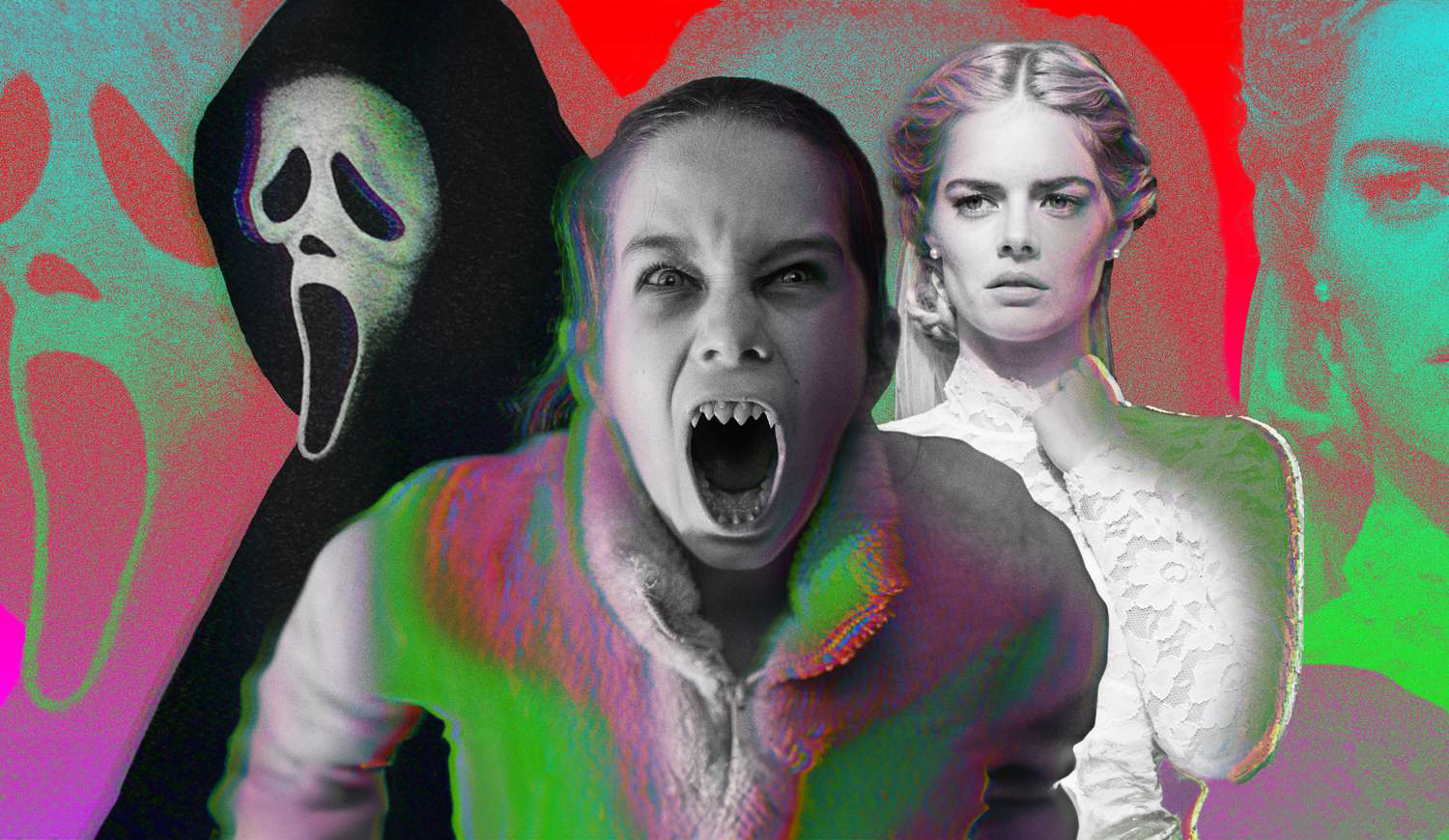
Matt Bettinelli-Olpin, Tyler Gillett, and Chad Villella are all filmmakers under the collective label called Radio Silence. Bettinelli-Olpin and Gillett are the primary directors under that moniker while Villella produces.
They have gained popularity over the past 13 years and their films have become known as having a certain Radio Silence “signature.” They are bloody, usually contain monsters, and have breakneck action sequences. Their recent film Abigail exemplifies that signature and is perhaps their best film yet. They are currently working on a reboot of John Carpenter’s Escape From New York.
We thought we would go through the list of projects they have directed and rank them from high to low. None of the movies and shorts on this list are bad, they all have their merits. These rankings from top to bottom are just ones we felt showcased their talents the best.
We didn’t include movies they produced but didn’t direct.
#1. Abigail
An update to the second film on this list, Abagail is the natural progression of Radio Silence’s love of lockdown horror. It follows in pretty much the same footsteps of Ready or Not, but manages to go one better — make it about vampires.
#2. Ready or Not
This film put Radio Silence on the map. While not as successful at the box office as some of their other films, Ready or Not proved that the team could step outside their limited anthology space and create a fun, thrilling, and bloody adventure-length film.
#3. Scream (2022)
While Scream will always be a polarizing franchise, this prequel, sequel, reboot — however you want to label it showed just how much Radio Silence knew the source material. It wasn’t lazy or cash-grabby, just a good time with legendary characters we love and new ones who grew on us.
#4 Southbound (The Way Out)
Radio Silence tosses their found footage modus operandi for this anthology film. Responsible for the bookend stories, they create a terrifying world in their segment titled The Way Out, which involves strange floating beings and some sort of time loop. It’s kind of the first time we see their work without a shaky cam. If we were to rank this entire film, it would remain at this position on the list.
#5. V/H/S (10/31/98)
The film that started it all for Radio Silence. Or should we say the segment that started it all. Even though this isn’t feature-length what they managed to do with the time they had was very good. Their chapter was titled 10/31/98, a found-footage short involving a group of friends who crash what they think is a staged exorcism only to learn not to assume things on Halloween night.
#6. Scream VI
Cranking up the action, moving to the big city and letting Ghostface use a shotgun, Scream VI turned the franchise on its head. Like their first one, this film played with canon and managed to win over a lot of fans in its direction, but alienated others for coloring too far outside the lines of Wes Craven’s beloved series. If any sequel was showing how the trope was going stale it was Scream VI, but it managed to squeeze some fresh blood out of this nearly three-decade mainstay.
#7. Devil’s Due
Fairly underrated, this, Radio Silence’s first feature-length film, is a sampler of things they took from V/H/S. It was filmed in an omnipresent found footage style, showcasing a form of possession, and features clueless men. Since this was their first bonafide major studio job it’s a wonderful touchstone to see how far they have come with their storytelling.
'Civil War' Review: Is It Worth Watching?
Follow our new YouTube channel "Mysteries and Movies" here.
News
Perhaps the Scariest, Most Disturbing Series of The Year

You may have never heard of Richard Gadd, but that will probably change after this month. His mini-series Baby Reindeer just hit Netflix and it’s a terrifying deep dive into abuse, addiction, and mental illness. What is even scarier is that it’s based on Gadd’s real-life hardships.
The crux of the story is about a man named Donny Dunn played by Gadd who wants to be a stand-up comedian, but it’s not working out so well thanks to stage fright stemming from his insecurity.
One day at his day job he meets a woman named Martha, played to unhinged perfection by Jessica Gunning, who is instantly charmed by Donny’s kindness and good looks. It doesn’t take long before she nicknames him “Baby Reindeer” and begins to relentlessly stalk him. But that is just the apex of Donny’s problems, he has his own incredibly disturbing issues.
This mini-series should come with a lot of triggers, so just be warned it is not for the faint of heart. The horrors here don’t come from blood and gore, but from physical and mental abuse that go beyond any physiological thriller you may have ever seen.
“It’s very emotionally true, obviously: I was severely stalked and severely abused,” Gadd said to People, explaining why he changed some aspects of the story. “But we wanted it to exist in the sphere of art, as well as protect the people it’s based on.”
The series has gained momentum thanks to positive word-of-mouth, and Gadd is getting used to the notoriety.
“It’s clearly struck a chord,” he told The Guardian. “I really did believe in it, but it’s taken off so quickly that I do feel a bit windswept.”
You can stream Baby Reindeer on Netflix right now.
If you or someone you know has been sexually assaulted, please contact the National Sexual Assault Hotline at 1-800-656-HOPE (4673) or go to rainn.org.
'Civil War' Review: Is It Worth Watching?
Follow our new YouTube channel "Mysteries and Movies" here.
Movies
The Original ‘Beetlejuice’ Sequel Had an Interesting Location
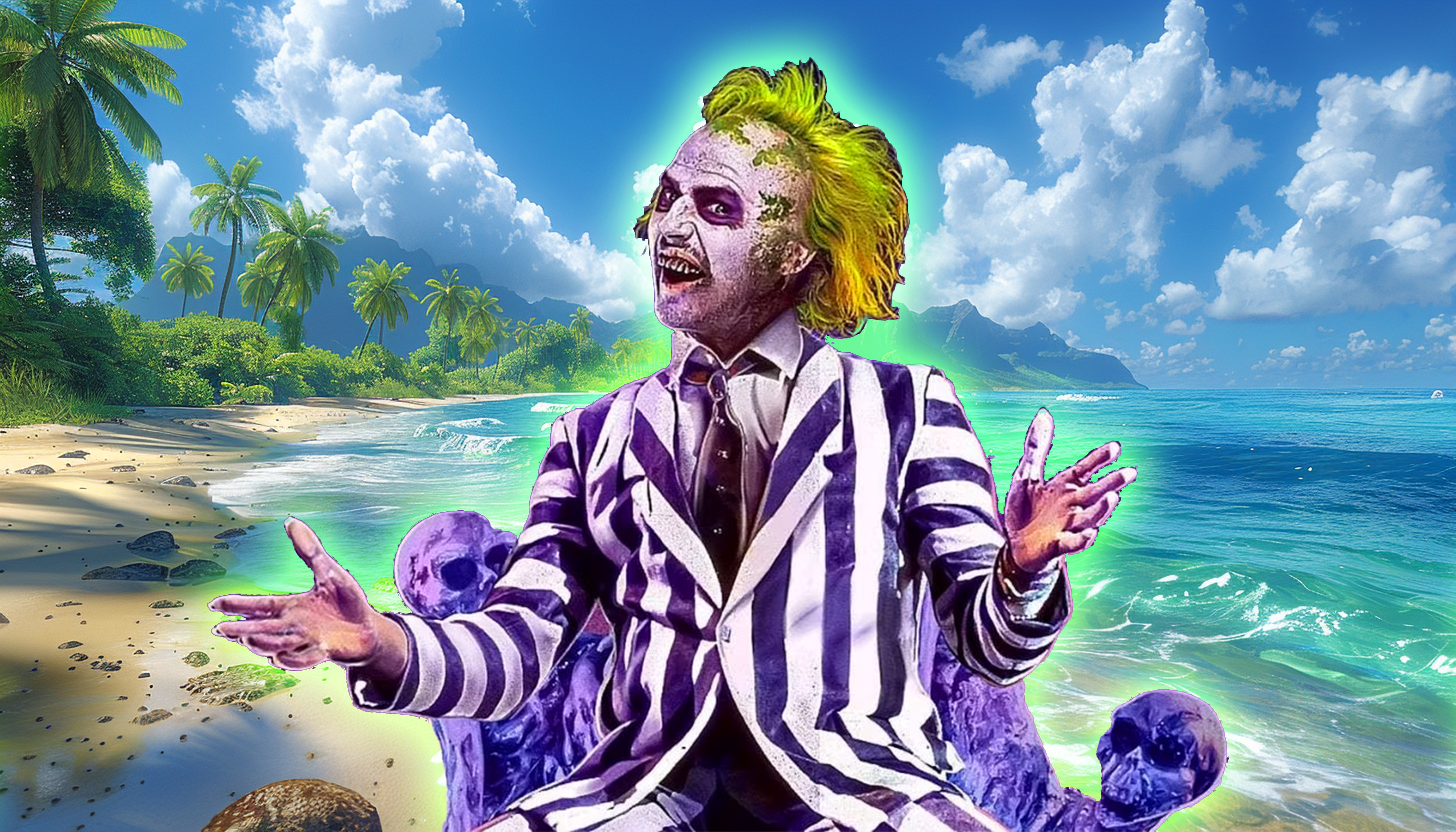
Back in the late ’80s and early ’90s sequels to hit movies weren’t as linear as they are today. It was more like “let’s re-do the situation but in a different location.” Remember Speed 2, or National Lampoon’s European Vacation? Even Aliens, as good as it is, follows a lot of the plot points of the original; people stuck on a ship, an android, a little girl in peril instead of a cat. So it makes sense that one of the most popular supernatural comedies of all time, Beetlejuice would follow the same pattern.
In 1991 Tim Burton was interested in doing a sequel to his 1988 original, it was called Beetlejuice Goes Hawaiian:
“The Deetz family moves to Hawaii to develop a resort. Construction begins, and it’s quickly discovered that the hotel will be sitting on top of an ancient burial ground. Beetlejuice comes in to save the day.”
Burton liked the script but wanted some re-writes so he asked then-hot screenwriter Daniel Waters who had just got done contributing to Heathers. He passed on the opportunity so producer David Geffen offered it to Troop Beverly Hills scribe Pamela Norris to no avail.
Eventually, Warner Bros. asked Kevin Smith to punch up Beetlejuice Goes Hawaiian, he scoffed at the idea, saying, “Didn’t we say all we needed to say in the first Beetlejuice? Must we go tropical?”
Nine years later the sequel was killed. The studio said Winona Ryder was now too old for the part and an entire re-cast needed to happen. But Burton never gave up, there were a lot of directions he wanted to take his characters, including a Disney crossover.
“We talked about lots of different things,” the director said in Entertainment Weekly. “That was early on when we were going, Beetlejuice and the Haunted Mansion, Beetlejuice Goes West, whatever. Lots of things came up.”
Fast-forward to 2011 when another script was pitched for a sequel. This time the writer of Burton’s Dark Shadows, Seth Grahame-Smith was hired and he wanted to make sure the story wasn’t a cash-grabbing remake or reboot. Four years later, in 2015, a script was approved with both Ryder and Keaton saying they would return to their respective roles. In 2017 that script was revamped and then eventually shelved in 2019.
During the time the sequel script was being tossed around in Hollywood, in 2016 an artist named Alex Murillo posted what looked like one-sheets for a Beetlejuice sequel. Although they were fabricated and had no affiliation with Warner Bros. people thought they were real.
Perhaps the virality of the artwork sparked interest in a Beetlejuice sequel once again, and finally, it was confirmed in 2022 Beetlejuice 2 had a green light from a script written by Wednesday writers Alfred Gough and Miles Millar. The star of that series Jenna Ortega signed on to the new movie with filming starting in 2023. It was also confirmed that Danny Elfman would return to do the score.
Burton and Keaton agreed that the new film titled Beetlejuice, Beetlejuice wouldn’t rely on CGI or other other forms of technology. They wanted the film to feel “handmade.” The film wrapped in November 2023.
It’s been over three decades to come up with a sequel to Beetlejuice. Hopefully, since they said aloha to Beetlejuice Goes Hawaiian there has been enough time and creativity to ensure Beetlejuice, Beetlejuice will not only honor the characters, but fans of the original.
Beetlejuice, Beetlejuice will open theatrically on September 6.
'Civil War' Review: Is It Worth Watching?
Follow our new YouTube channel "Mysteries and Movies" here.
-

 News6 days ago
News6 days agoWoman Brings Corpse Into Bank To Sign Loan Papers
-

 News7 days ago
News7 days agoHome Depot’s 12-Foot Skeleton Returns with a New Friend, Plus New Life-Size Prop from Spirit Halloween
-

 News5 days ago
News5 days agoBrad Dourif Says He’s Retiring Except For One Important Role
-

 Strange and Unusual5 days ago
Strange and Unusual5 days agoMan Arrested for Allegedly Taking a Severed Leg From Crash Site And Eating It
-

 Movies6 days ago
Movies6 days agoPart Concert, Part Horror Movie M. Night Shyamalan’s ‘Trap’ Trailer Released
-
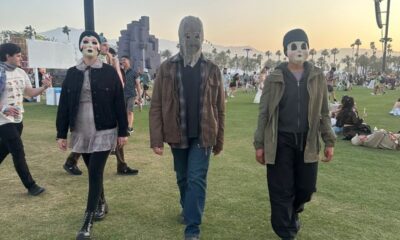
 Movies7 days ago
Movies7 days ago‘The Strangers’ Invaded Coachella in Instagramable PR Stunt
-

 Movies6 days ago
Movies6 days agoAnother Creepy Spider Movie Hits Shudder This Month
-
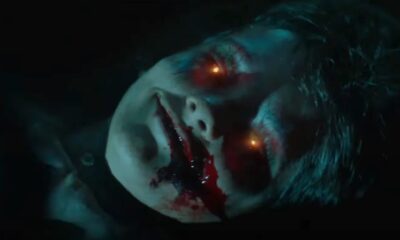
 Movies7 days ago
Movies7 days agoRenny Harlin’s Recent Horror Movie ‘Refuge’ Releasing in U.S. This Month
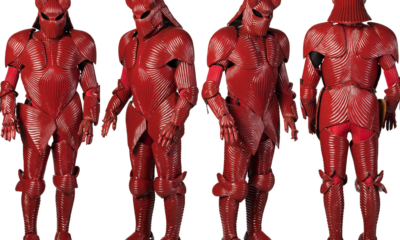

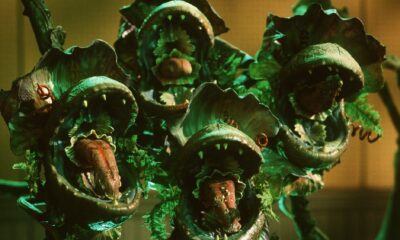



















You must be logged in to post a comment Login